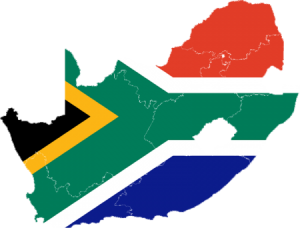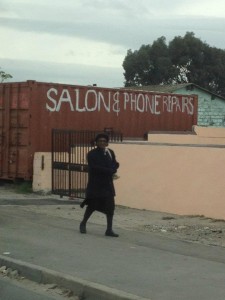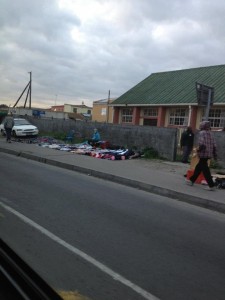“One Nation, Many languages”
Much like walking onto campus at MIIS, every day I come to work, I hear a collection of accents and languages. On the brief 10-minute walk from my house to the Obz station, I will likely hear English, Xhosa, and Afrikaans (as spoken by the colored people working nearby my home). At work, a different set of accents hit my ears, as my co-workers come from the UK, Austria, South Africa, and one with a particularly worldly accent (she has lived in Hong Kong, Australia, New Zealand and now permanently resides in South Africa).
Officially, on paper, this is not surprising. South Africa and Africa in general is known for its many languages. South Africa alone has 11 official languages and an array of unofficial ones. While English is the lingua franca, many of South Africa’s other languages are spoken at home and within communities. And while, it may sometimes be hard to gauge whether to greet someone with “Molo” or “Goeiedag.” The longer I stay here, the easier it is becomes to determine, just what languages people speak at home. How can I tell? Usually by the way a person rolls their “r’s”, how they say “idea” (or “idear)” whether they say “eshh” are often giveaways to what people speak at home.
I could go on and on about language, but its funnier I think to teach than to preach! Below is a mini lesson in 3 of the South African languages. Enjoy!
South African English:
South Africa’s many languages influence each other and so do their historical origins. This mingling of the many can be seen when hearing or speaking modern day SA English (which originated from the UK). Check it out for yourself.
A taste of South African English!
1) http://www.youtube.com/watch?v=h30Di2cSXR0&feature=related
2) http://www.youtube.com/watch?v=GOXpvsQzOdA
IsiXhosa:
The second lingua franca is IsiZulu, which is included in a set of Native African languages referred to as Nguni languages. This set of languages also includes isiXhosa, siSwati, and isiNdebele and are similar in syntax and grammar.
Nevertheless, overall, the languages you hear most frequently spoken depends greatly on where in the country you are. In Western Cape, where I am located, this is the breakdown according to SouthAfrica.info/about– Afrikaans (55.3%), isiXhosa (23.7%), English (19.3%). Thus below is a look or rather a listen in on Xhosa!
Want to learn some basic isiXhosa, check this series out:
1) http://www.youtube.com/watch?v=JZ6oe2U7AOA&feature=relmfu
Afrikaans:
In South Africa, most people speak a minimum of two languages and one of the most frequently heard languages in Cape Town is Afrikaans. Cape Town, in fact, can be called the place of its birth. Afrikaans, which originated from Dutch, has seen the number of speakers increase under Apartheid, whereas it was mandatory for many to learn Afrikaans. Nowadays, it is often used at home and among friends with those of Dutch heritage as well as in the Colored communities. It’s a fun language that is closer to English than I would have thought. Give it a listen!
Some basic phrases in Afrikaans
1) http://www.youtube.com/watch?v=79BaPBgtp_A&feature=related
So to all those who wonder, “what does the National Anthem of a country with 11 official language sounds like?”, check this out: http://www.youtube.com/watch?v=nL0ZCP2JPCU












